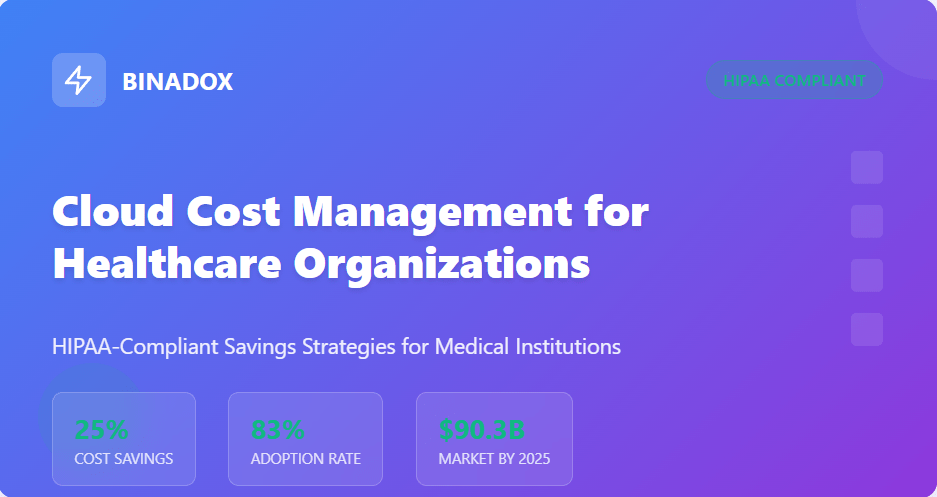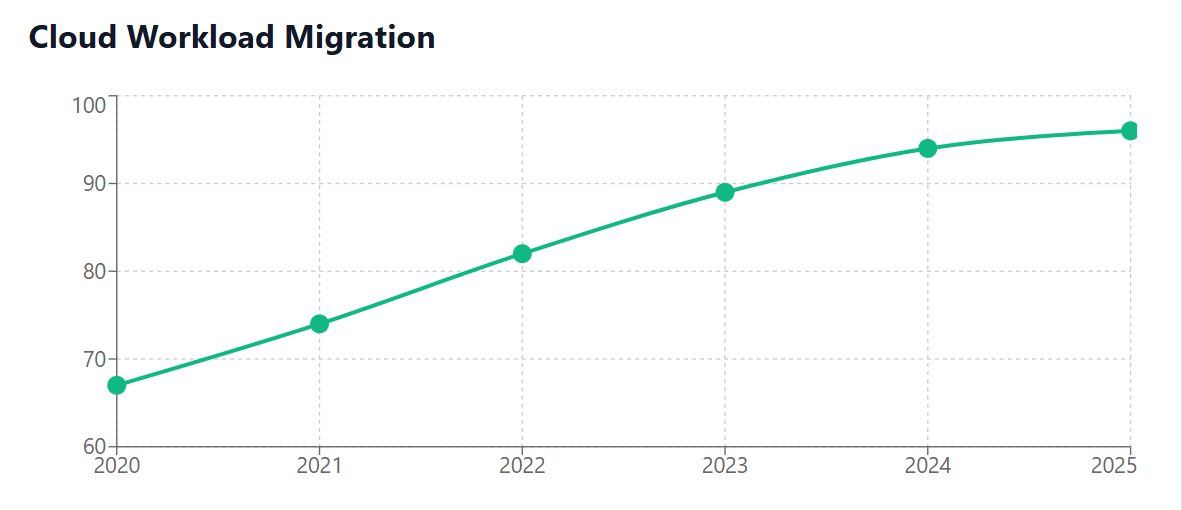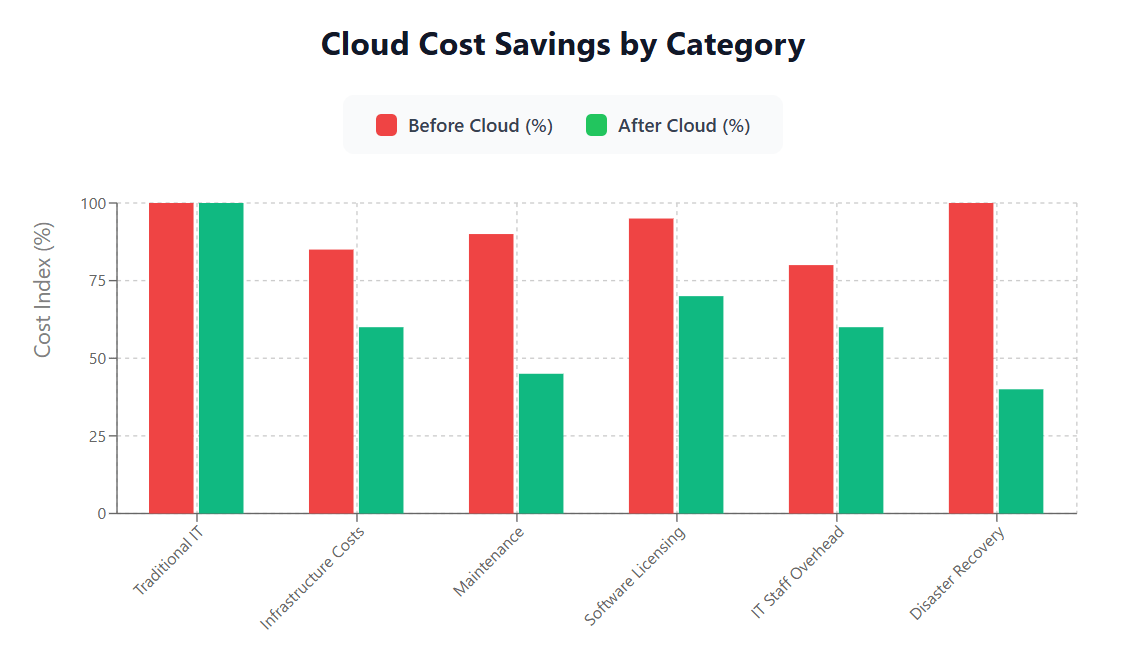
Healthcare organizations face a unique challenge in today’s digital landscape: balancing the need for cost-effective cloud solutions with stringent regulatory requirements and patient data protection standards. As medical institutions increasingly adopt cloud computing and SaaS applications to improve patient care and operational efficiency, managing these technology investments while maintaining HIPAA compliance has become critical for organizational success.
The healthcare industry’s digital transformation has accelerated significantly, with cloud adoption growing at an unprecedented rate. However, this rapid expansion often leads to uncontrolled cloud spending, duplicate services, and compliance risks that can expose healthcare organizations to both financial and regulatory penalties. Effective cloud cost management in healthcare requires a comprehensive approach that prioritizes both economic efficiency and regulatory compliance.
This guide provides healthcare leaders, IT administrators, and financial teams with practical strategies for implementing HIPAA-compliant cloud cost management. By the end of this article, you will understand how to optimize your healthcare organization’s cloud spending while maintaining the highest standards of patient data security and regulatory compliance.
Through exploring cloud cost optimization techniques, SaaS management best practices, and proven governance frameworks, healthcare organizations can achieve significant cost savings while enhancing their ability to deliver quality patient care through technology.
What is Cloud Cost Management in Healthcare?
Cloud cost management in healthcare refers to the strategic oversight and optimization of cloud computing expenses while ensuring full compliance with healthcare regulations, particularly HIPAA (Health Insurance Portability and Accountability Act). This specialized approach to cloud financial management addresses the unique requirements of healthcare organizations, including patient data protection, regulatory compliance, and the critical nature of healthcare applications.
Unlike general cloud cost management, healthcare cloud cost management must account for enhanced security requirements, business associate agreements (BAAs), audit trails, and the potential impact of downtime on patient care. Healthcare organizations must balance cost optimization with the need for redundancy, security, and compliance, making this a more complex undertaking than traditional cloud financial management.
Understanding Healthcare Cloud Compliance Requirements
Before implementing any cloud cost optimization strategy, healthcare organizations must understand the regulatory landscape that governs their cloud usage. HIPAA compliance is the primary concern, but healthcare organizations may also need to comply with HITECH, state privacy laws, and international regulations depending on their scope of operations.
HIPAA Cloud Compliance Requirements:
Healthcare organizations must ensure that all cloud providers sign Business Associate Agreements (BAAs) and implement appropriate safeguards for protected health information (PHI). This includes encryption at rest and in transit, access controls, audit logging, and incident response procedures. These compliance requirements directly impact cloud cost management decisions, as organizations must prioritize HIPAA-compliant services even if they carry premium pricing.
Security and Privacy Considerations:
Cloud cost optimization in healthcare cannot compromise patient data security or privacy. Organizations must implement comprehensive cloud security measures, including multi-factor authentication, role-based access controls, and continuous monitoring. These security requirements may increase initial costs but are essential for maintaining compliance and avoiding costly data breaches.
Current State of Healthcare Cloud Adoption
The healthcare cloud market has experienced remarkable growth, with organizations recognizing the benefits of cloud computing for improving patient care and operational efficiency. According to recent market research, the global healthcare cloud computing market is expected to reach $90.3 billion by 2025, growing at a compound annual growth rate of 17.8%.
Healthcare organizations are increasingly adopting cloud-based Electronic Health Records (EHR) systems, telemedicine platforms, medical imaging solutions, and practice management software. This widespread adoption has created new opportunities for cost optimization while simultaneously introducing challenges related to cloud spend management and compliance oversight.
The COVID-19 pandemic significantly accelerated healthcare cloud adoption, as organizations needed to rapidly implement telehealth solutions and support remote work capabilities. This rapid deployment often occurred without proper cost management frameworks, leading to increased cloud spending and potential optimization opportunities. We’ve penned an article exploring the impact of COVID-19 on the technology sector, particularly focusing on cloud computing adoption in healthcare.
Key Healthcare Cloud Adoption Statistics:
- 83% of healthcare organizations report using cloud services for at least one application
- Electronic Health Records (EHR) systems represent the largest segment of healthcare cloud adoption
- Telemedicine platforms saw a 3,800% increase in usage during 2020
- Healthcare organizations using cloud solutions report 15-25% cost savings compared to on-premises infrastructure

Benefits of Cloud Cost Management for Healthcare Organizations
Implementing effective cloud cost management provides numerous advantages for healthcare organizations beyond simple cost reduction. These benefits directly support improved patient care, operational efficiency, and regulatory compliance.
Enhanced Financial Predictability
Cloud cost management enables healthcare organizations to establish predictable technology budgets through subscription-based pricing models and reserved instance planning. This financial predictability is crucial for healthcare organizations operating on tight budgets and facing increasing pressure to reduce operational costs while maintaining quality care.
Improved Resource Allocation
Effective cloud cost management helps healthcare organizations allocate IT resources more efficiently, ensuring that critical patient care applications receive adequate resources while eliminating waste on underutilized services. This optimization directly supports better patient outcomes by ensuring system reliability and performance.
Compliance and Security Enhancement
Proper cloud cost management includes governance frameworks that enhance compliance and security postures. By implementing centralized procurement and management processes, healthcare organizations can ensure all cloud services meet HIPAA requirements and maintain proper audit trails for regulatory reporting.
Scalability for Patient Care
Cloud cost optimization enables healthcare organizations to scale their technology infrastructure based on patient demand and seasonal variations. This scalability is particularly important for hospitals and health systems that experience varying patient volumes and need to adjust resources accordingly.
Disaster Recovery and Business Continuity
Well-managed cloud infrastructure provides healthcare organizations with robust disaster recovery capabilities, ensuring patient care continuity during emergencies. Cloud cost management helps optimize these critical backup systems while maintaining compliance and security standards.

HIPAA-Compliant Cloud Cost Optimization Strategies
Healthcare organizations require specialized approaches to cloud cost optimization that prioritize compliance and security alongside financial efficiency. These strategies must account for the unique requirements of patient data protection and regulatory oversight.
1. HIPAA-Compliant Cloud Provider Selection
Choose cloud providers that offer comprehensive HIPAA compliance features, including signed Business Associate Agreements, dedicated compliance teams, and healthcare-specific security controls. While these providers may have higher costs, they provide essential compliance features that reduce regulatory risk and potential penalties.
2. Implement Cloud Governance Frameworks
Establish comprehensive cloud governance policies that include procurement approval processes, security requirements, and compliance verification procedures. These frameworks ensure that all cloud services meet healthcare standards while preventing unauthorized or non-compliant cloud usage.
3. Rightsizing Healthcare Applications
Regularly assess cloud resource utilization for healthcare applications, ensuring that critical patient care systems have adequate resources while eliminating over-provisioning. Healthcare applications often have specific performance requirements that must be maintained during optimization efforts.
4. Reserved Instance Planning for Predictable Workloads
Healthcare organizations typically have predictable baseline workloads for EHR systems, practice management software, and other core applications. Implementing reserved instance strategies for these stable workloads can provide significant cost savings while ensuring reliable performance.
5. Automated Cost Monitoring and Alerting
Deploy automated monitoring systems that track cloud spending in real-time and alert administrators to unusual usage patterns or cost spikes. These systems help prevent budget overruns while ensuring that cost optimization efforts don’t impact patient care applications.
Examples of Good and Poor Healthcare Cloud Spending Practices
Understanding real-world examples of cloud spending practices helps healthcare organizations identify opportunities for improvement and avoid common pitfalls that can lead to increased costs and compliance risks.
Good Healthcare Cloud Spending Practices
- Centralized HIPAA-Compliant Procurement: A regional health system implements centralized procurement processes for all cloud services, ensuring that every vendor signs appropriate Business Associate Agreements and meets security requirements before deployment.
- Regular Compliance and Cost Audits: A medical practice conducts quarterly audits of cloud services, identifying unused licenses, redundant applications, and opportunities for consolidation while maintaining compliance documentation.
- Department-Based Cost Allocation: A hospital implements cost allocation tags that track cloud spending by department (radiology, cardiology, administration), enabling better budget management and accountability while maintaining security controls.
- Automated Resource Scaling: A telehealth provider implements automated scaling for their video conferencing platform, ensuring adequate capacity during peak hours while reducing costs during low-usage periods, all while maintaining HIPAA compliance.
Poor Healthcare Cloud Spending Practices
- Uncontrolled Shadow IT Adoption: Individual departments procure cloud services without IT oversight, leading to compliance risks, security vulnerabilities, and duplicate spending on similar applications.
- Ignoring Compliance Costs: An organization chooses the cheapest cloud options without considering HIPAA compliance requirements, resulting in expensive migration costs and potential regulatory penalties.
- Over-Provisioning for Compliance: A medical center significantly over-provisions cloud resources believing it’s necessary for compliance, when right-sizing could achieve the same security and performance standards at lower cost.
- Lack of Usage Monitoring: A healthcare organization fails to monitor application usage, continuing to pay for software licenses that are no longer needed or used by staff members.
SaaS Management for Healthcare Organizations
Healthcare organizations typically use numerous SaaS applications for various operational functions, from EHR systems and practice management software to communication platforms and billing applications. Effective SaaS management is crucial for controlling costs while maintaining compliance and security standards.
Healthcare-Specific SaaS Categories
Healthcare organizations commonly use SaaS solutions in several categories: Electronic Health Records, practice management, medical billing, telemedicine, medical imaging, patient engagement, and administrative tools. Each category has specific compliance requirements and cost optimization opportunities.
HIPAA-Compliant SaaS Procurement
All healthcare SaaS applications must meet HIPAA requirements and include signed Business Associate Agreements. Organizations should maintain a centralized registry of approved SaaS vendors and ensure that all applications undergo security and compliance reviews before implementation.
SaaS License Optimization
Healthcare organizations should regularly review SaaS license utilization, identifying opportunities to adjust subscription levels based on actual usage. This includes monitoring user activity, feature utilization, and departmental needs to ensure optimal license allocation. Implementing effective SaaS subscription management practices helps healthcare organizations avoid paying for unused licenses while ensuring staff have access to necessary applications.
Integration and Interoperability Considerations
Healthcare SaaS applications must often integrate with existing systems, particularly EHR platforms. Cost management should consider integration costs and the total cost of ownership when evaluating SaaS options, not just subscription fees.
Implementing Healthcare Cloud Governance Policies
Effective cloud governance is essential for healthcare organizations to maintain compliance while optimizing costs. These policies provide frameworks for decision-making, risk management, and operational oversight.
Compliance-First Governance Framework
Healthcare cloud governance policies should prioritize HIPAA compliance and patient data protection above cost considerations. This includes mandatory security assessments, compliance reviews, and ongoing monitoring requirements for all cloud services.
Procurement and Approval Processes
Implement structured procurement processes that require compliance review, security assessment, and financial approval for all cloud services. These processes should include clear escalation paths and decision-making criteria that balance cost, functionality, and compliance requirements.
Ongoing Monitoring and Reporting
Establish regular reporting mechanisms that track cloud spending, compliance status, and performance metrics. These reports should be shared with appropriate stakeholders, including clinical leadership, IT management, and financial teams. Healthcare organizations can benefit from implementing comprehensive cloud compliance frameworks that address both cost management and regulatory requirements.
Incident Response and Breach Management
Cloud governance policies must include specific procedures for managing security incidents and potential data breaches in cloud environments. These procedures should address notification requirements, investigation processes, and remediation steps.
How Binadox Helps Healthcare Organizations Optimize Cloud Costs
Healthcare organizations face unique challenges in managing cloud costs while maintaining HIPAA compliance and ensuring optimal patient care delivery. Binadox addresses these specific needs through specialized features designed for healthcare environments.
HIPAA-Compliant Cost Management Platform
Binadox provides healthcare organizations with a HIPAA-compliant platform for managing cloud costs across multiple providers and SaaS applications. The platform maintains appropriate security controls and audit trails required for healthcare environments while providing comprehensive cost visibility and optimization recommendations.
Healthcare-Specific SaaS Management
The platform supports integration with healthcare-specific SaaS applications, including EHR systems, practice management software, and medical billing platforms. Binadox helps healthcare organizations track utilization, manage licenses, and optimize spending on these critical applications while maintaining compliance requirements.
Centralized Compliance Oversight
Binadox enables healthcare organizations to maintain centralized oversight of all cloud services, ensuring that every application meets HIPAA requirements and includes appropriate Business Associate Agreements. The platform provides compliance reporting and audit trail capabilities essential for healthcare regulatory requirements.
Automated Cost Optimization with Compliance Safeguards
The platform provides automated optimization recommendations that consider healthcare compliance requirements, ensuring that cost-saving measures don’t compromise patient data security or regulatory compliance. This includes rightsizing recommendations that maintain performance standards for critical healthcare applications.
Integration with Healthcare Workflows
Binadox integrates with existing healthcare IT workflows and approval processes, enabling organizations to maintain their established governance frameworks while gaining enhanced cost visibility and optimization capabilities.
Healthcare organizations using Binadox typically achieve 20-30% cloud cost savings while improving their compliance posture and reducing administrative overhead associated with cloud cost management.
Conclusion
Cloud cost management for healthcare organizations requires a specialized approach that balances financial optimization with stringent compliance and security requirements. As healthcare continues to embrace digital transformation, the ability to effectively manage cloud costs while maintaining HIPAA compliance becomes increasingly critical for organizational success.
Healthcare organizations that implement comprehensive cloud cost management strategies can achieve significant financial benefits while enhancing their ability to deliver quality patient care. These strategies must prioritize compliance and security while pursuing cost optimization opportunities through rightsizing, reserved instance planning, and effective SaaS management.
The key to successful healthcare cloud cost management lies in establishing robust governance frameworks that ensure all technology decisions support both financial objectives and patient care goals. Organizations must maintain centralized oversight of cloud services while enabling the flexibility and scalability that cloud computing provides.
By adopting best practices for HIPAA-compliant cloud cost management and leveraging specialized tools like Binadox, healthcare organizations can optimize their technology investments while maintaining the highest standards of patient data protection and regulatory compliance. This balanced approach enables healthcare providers to focus on their core mission of delivering excellent patient care while maintaining financial sustainability in an increasingly competitive healthcare environment.
The future of healthcare depends on the successful integration of cost-effective technology solutions that support improved patient outcomes, operational efficiency, and regulatory compliance. Organizations that master cloud cost management while maintaining compliance standards will be best positioned to thrive in the evolving healthcare landscape.

